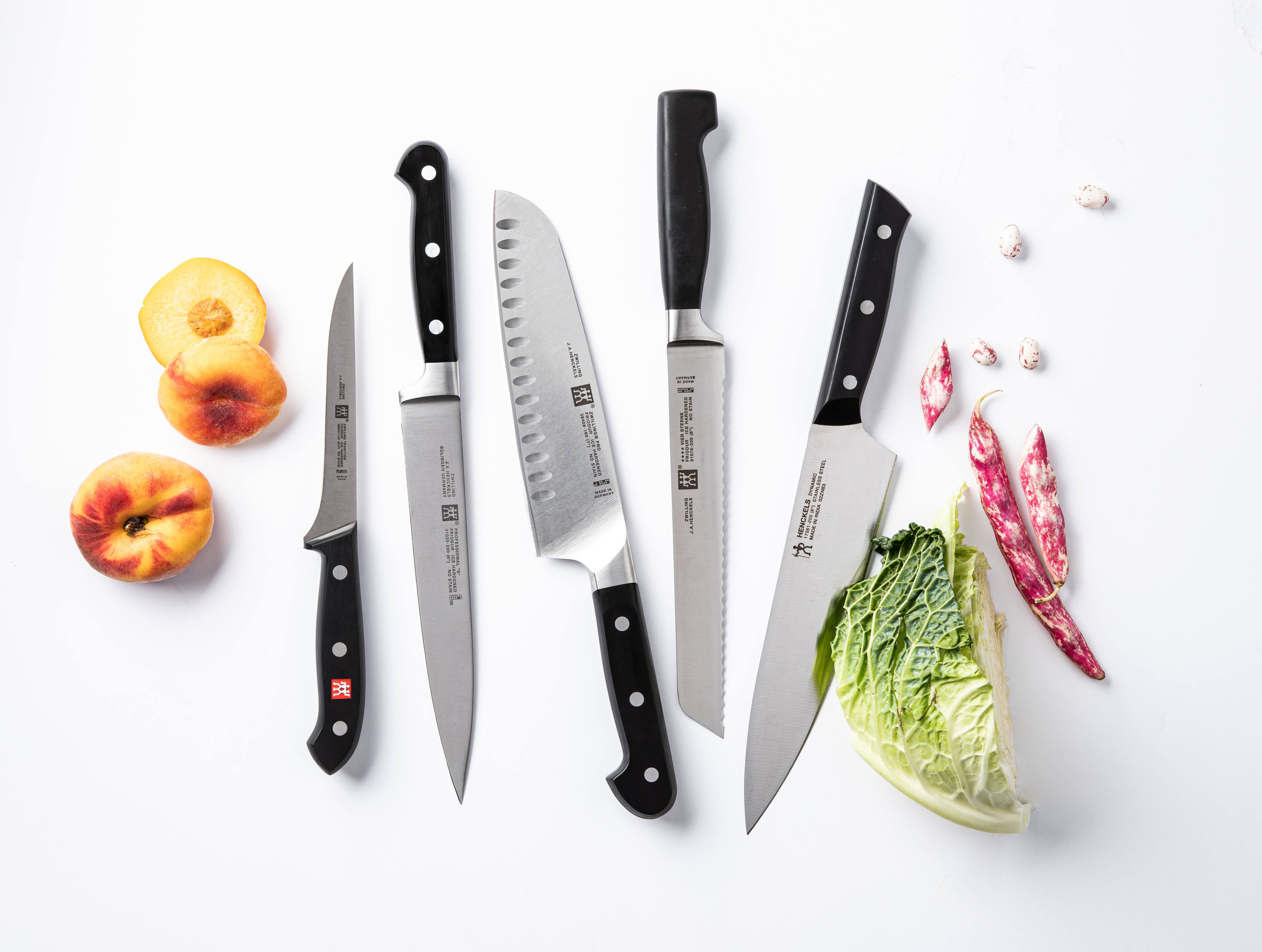Crushing your bread while trying to get a slice? There’s a knife for that! Squishing that perfectly plump tomato when you’re trying to prep it for burgers? There’s a knife for that! Each knife is designed with a purpose, and using the correct one when you’re preparing a meal can make all the difference.
Chef Knife

Primarily used for chopping, slicing, and dicing meats and vegetables, the chef knife is generally the most frequently used knife in the kitchen next to the paring knife. The length of the blade can vary: 6″, 8″, 9” or 10″.
Paring Knife
The paring knife features a short, triangular blade that is usually 3″ to 4″. This popular knife is used to peel and slice small fruits and vegetables, and also to prepare garnishes.
Bread Knife

Designed with a serrated blade for cutting soft breads and larger delicate pastries, bread knives typically have a blade that’s 8″ to 10″.
Santoku Knife
The santoku knife is a Japanese-style all-purpose knife for slicing, chopping, and dicing. It’s similar to a chef’s knife except it has a wider, thinner blade.
Carving/Slicing Knife

These knives efficiently cut through cooked meats, such as medium-sized roasts and fowl, and can also be used to cut large vegetables and fruits. The blade is generally about 8″ to 10″ long, and fairly narrow.
Cleaver
The cleaver is large and heavy, so it’s highly effective for chopping through joints and bones, or for large, dense vegetables such as cabbage. Some experienced chefs prefer a cleaver to a chef’s knife.
Boning Knife
Designed to easily bend in order to separate meat from the bone, the boning knife is very thin, slightly curved and very flexible. It’s usually 5″ to 6″ long, and ideal for filleting tender fish, and removing skin from meats, fruits, and vegetables.
Ready to upgrade your knives? Now is the time! Our semi-annual Henckels Event is on now. Click here to shop all of our great deals!
This sale runs until October 10, 2021.







